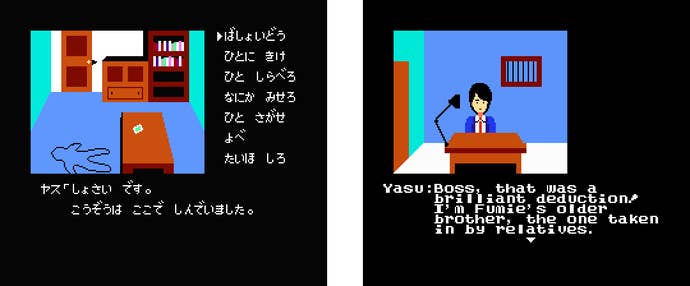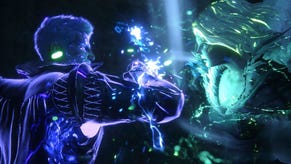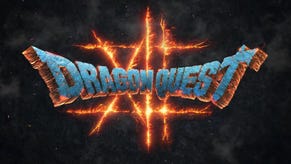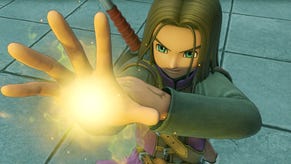The History of RPGs: How Dragon Quest Redefined a Genre
COVER STORY: 30 years ago, a small team of Japanese game designers changed the way the world looked at role-playing games.
This article first appeared on USgamer, a partner publication of VG247. Some content, such as this article, has been migrated to VG247 for posterity after USgamer's closure - but it has not been edited or further vetted by the VG247 team.
This article is the first entry of a series about the history and evolution of role-playing games, both in the west and in Japan. To kick off the series, we're looking back at one of the most influential RPGs ever made: Dragon Quest, which turned 30 on May 27.
Birth of a new genre
To fully appreciate the impact and importance of Dragon Quest, you need to look back to the state of console role-playing games prior to the game's debut in May 1986. In short, there was no such thing as a proper RPG on consoles. The genre thrived on personal computers, but had failed to cross over to dedicated, television-based systems. Dragon Quest broke a previously insurmountable barrier, bringing a genre that had been exclusive to expensive, complex computers to a more consumer- and kid-friendly platform — and one with much stricter technical limitations as well.
This isn't to say no one had tried to make RPGs work on consoles prior to May 1986. In fact, king of the genre Dungeons & Dragons had made its debut on Mattel's Intellivision back in 1983 with Treasure of Tarmin. Before that, Warren Robinett had made a strong early attempt at streamlining the essence of dungeon crawling to work with the Atari 2600's single-button joystick and 4K of memory back in 1979 with Adventure. That seminal Atari release helped inspire a number of similar proto-action-RPGs, including Exidy's Venture and Namco's Tower of Druaga. Both of those games had bravely attempted to transplant RPG concepts into the arcade, where three-minute play sessions were the golden ideal — a difficult fit for a genre whose quests could last for dozens of hours on PC. And Druaga, in turn, exerted no small influence over Nintendo's The Legend of Zelda, which had debuted a mere four months prior to Dragon Quest.
Still, all of these games took tremendous liberties with the core underpinnings of RPGs. Venture had more in common with Rally-X than with Rogue, and The Legend of Zelda was originally slated to star premiere action hero Mario. Dragon Quest stood apart by offering most of the elements PC RPG fanatics took as mandatory: Statistics, experience levels, random enemy encounters, turn-based combat, and a sprawling world filled with non-player characters to nudge the hero ever forward in his or her quest. Games like Druaga and Zelda had abstracted most of these elements or replaced them outright, with heroic progress measured through the acquisition of item upgrades rather than via earned experience points. Proper RPGs had been almost non-existent outside of Treasure of Tarmin, which involved a snappier rendition of the first-person dungeon-crawling seen in the likes of Wizardry and The Bard's Tale; its short quest to kill a Minotaur and claim its eponymous treasure could be completed in a matter of minutes, depending on the difficulty setting.
So, the question in 1986 wasn't whether or not RPGs would become a feature of game consoles; inevitably, someone was bound figure out how to make it work. The question instead was, how would it work? And who would be the one to crack the code?
The answer to the second question provided the solution to the first. The architects of the console RPG ended up being a developer called Chun Soft, working under the auspices of publisher Enix. The two companies had worked as exclusive collaborators since the developer's inception: Chun Soft had been founded by a teenage programmer named Koichi Nakamura, who won an Enix-sponsored amateur game design contest with his Mappy-esque platform action game Door Door. Nakamura used his considerable earnings to establish his own company, which he named for Door Door protagonist Chun. The studio's follow-up saw another aspiring game designer by the name of Yuji Horii bring to life a revolutionary graphical adventure game called Portopia Rezoku Satsuijin Jiken (The Portopia Serial Murder Case).
Portopia had been a fairly standard adventure game when it debuted on PC, sitting somewhere between Sierra graphical adventures like King's Quest and Infocom's text adventures in its execution: It used a text-based parser as players moved through scenic images hunting for clues. Horii's game had debuted around the same time that Nintendo launched its Family Computer console in Japan (which would be known as the NES when it launched in America several years later), and the quick rise to success of that platform inspired Chun Soft to port its computer games to Famicom. As an action-based creation, Door Door's conversion proved a cinch and ended up being one of Famicom's first third-party game releases; it became a massive success. Portopia, on the other hand, posed a greater challenge. While its text parser could have theoretically been designed to work with Nintendo's Family Basic keyboard peripheral, that would have limited Portopia's console version to the fraction of Famicom owners who also purchased the keyboard. And in any case, the full-sized Famicom Basic PC-style keyboard dwarfed the console itself and undermined the compact, streamlined nature of console gaming. Besides, if players wanted a PC experience, Portopia was available on PC already.

Instead, Nakamura collaborated with Horii to reinvent the game for the Famicom's standard interface: A small controller featuring a directional cross-pad, two action buttons, and smaller chiclet-style Select and Start keys. The pair completely overhauled Portopia's interface design for console, removing the text parser while adding a windowed style reminiscent of the cutting-edge computer operating systems of the time, Microsoft's Windows 1.0 and Apple's Macintosh. Rather than using trial-and-error to determine the proper words and syntax necessary to solve Portopia's murder mystery as had been required on PC, Famicom players instead selected commands from a limited palette of terms that would branch into new options as players navigated the text menus. It was a fresh, new take on the graphical adventure, and the idea would be widely imitated — not only by other Famicom adventures, but also by Icom's MacVenture series and the entirety of the LucasFilm Games/LucasArts adventure canon. The directness of the interface helped make Portopia, Famicom's first adventure game, into a monster hit.
The huge popularity and sales of Chun Soft's Famicom productions gave the developer an enormous amount of latitude, and Nakamura and Horii decided to take advantage of that freedom by giving the Famicom its first proper role-playing game. "During that time, Horii-san was really into Ultima, and I was really into Wizardry," Nakamura told me in a 2011 interview. "So both of us said, 'Why don't we create a role-playing game?' We were really into RPGs at the time."
Like many Japanese game developers in the ’80s, Nakamura and Horii found themselves drawn to imported Western RPGs, even before those games had been properly localized into Japanese. Dutch expatriate Henk Rogers gave Japan its first homegrown hit RPG in 1984's The Black Onyx, but that wouldn't make its way to Japanese consoles — both Famicom and SEGA's SG-1000 — until 1988. Many other developers created their own crude attempts at RPG design as well, but always for computers, and rarely with anything resembling critical or commercial success. In the meantime, the RPG fans at Chun Soft found themselves ensnared by these foreign releases; the duo reputedly encountered Wizardry at an Apple computer expo in California and fell instantly in love with the genre and challenging mystery it represented.
"[With Wizardry], you don't know what kind of monster is going to appear," Nakamura says. "And the fact that your character becomes stronger and stronger, evolving as you play the game... that was a big attraction. And also the treasures and everything, and the map. I remember it being a 20-by-20 map, but I used to create my own 3D map on graph paper, just imagining what the dungeon could be like. That was fascinating to me."
With their shared love of Western role-playing, it only made sense for Nakamura and Horii to attempt to create their own take on the genre. And so Dragon Quest was born.









